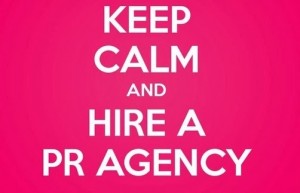
Curious about what new marketing and communication trends 2014 will bring? In part one of this post, we identified three key trends for the New Year: social media becoming pay-for-play, branded journalism, and wearable technology and the Internet of Things. Today, we’ll discuss three more trends.
Collaborative economy: Crowd sourcing, crowd funding, crowd storming: Fab, AirBnB, Uber, TaskRabbit. These are all examples of the collaborative economy. Recent advances in technology like mobile, social, 3D printers and the Internet of Things are empowering people and businesses to share existing resources with each other rather than buy anew or reinvent the wheel. It’s a simple, but revolutionary concept. The collaborative economy was a huge trend in 2013, but is likely to grow in 2014 and marketers should challenge themselves to think about how they can leverage it. ‘My Starbucks Idea’ is a good example of how a brand creatively harnessed the power of crowdsourcing, not only for marketing, but to innovate their business.
Anticipatory computing – This is the act of serving up information a person wants before they even know to ask for it. Mobile users have been checking into their locations, listening to music on their phones, and updating ical events for years. Now, companies like Foursquare and Circle are using the data from these mobile interactions to tailor suggestions specific to the user, which effectively means that your smartphone could dictate your preferences and purchases.
For example, Foursquare is rolling out push notification recommendations to help users find what’s happening in their area. People who opt-in to the push notifications will get suggestions on where to eat or what to do in their neighborhoods. I predict that this idea will proliferate in 2014, and will have a significant impact on advertising and marketing.
Super fans as marketers: The idea of engaging an audience that is already passionate about your brand isn’t new, but social media makes ‘super fans’ even more valuable. It’s easier than ever before to find and reach super fans, and they have a menagerie of tools at their fingertips to evangelize their brand affinities.
A recent Mashable article stated that a Facebook friend is now worth about $174, which 28% higher than 2012, and that figure is expected to increase. Online friends are clearly valuable, but if recommendations from Facebook friends are worth almost $200, what’s the value of a recommendation from a real-live friend? Super fans can be a brand’s secret weapon, not only because of their power online, but also offline.
As we progress through the age of the ‘super fan,’ marketers will enlist these ‘assets’ to market and sell for them, both online and in-person. Here’s an example: Pepsi rewarded selected Beyoncé fans who created videos based on the singer’s latest commercial with the chance to appear in a video made with her choreographer, as well as a trip to her concert in Brooklyn. Smart.
What do you think will be the major marketing trends in 2014? Tell us in the comments.




 Looking at past trends in an evolving industry can be a poor predictor of future trends—whether you’re talking about the stock market or the PR field.
Looking at past trends in an evolving industry can be a poor predictor of future trends—whether you’re talking about the stock market or the PR field.











 Grant Wright
Grant Wright Corie Fiebiger
Corie Fiebiger
 Shae Geary
Shae Geary Phelan Riessen
Phelan Riessen Katrina Early
Katrina Early Hamish Marshall
Hamish Marshall